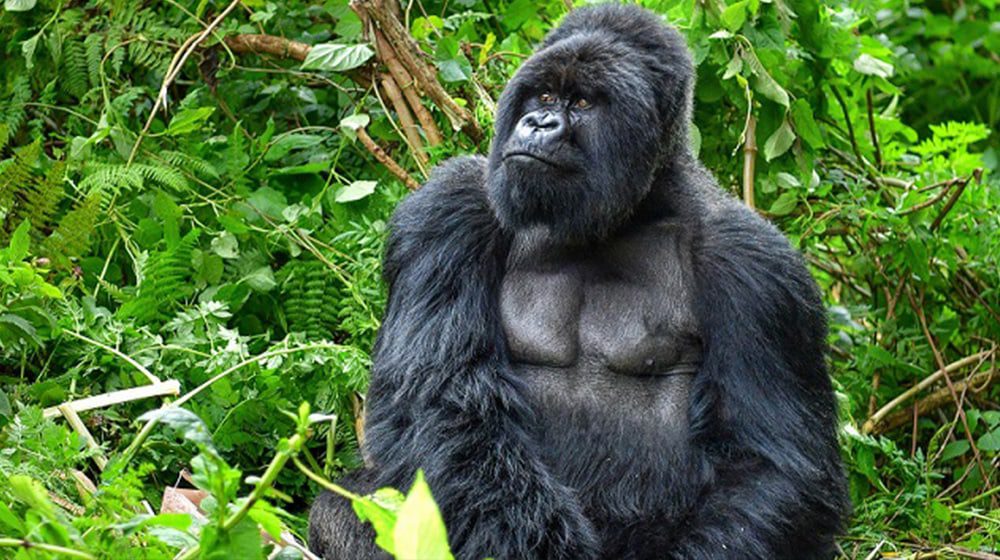A surge of gorilla tourism is taking travellers off the beaten track to discover new destinations in Africa.
The East African countries of Rwanda and Uganda have both seen tourism numbers rise as a result of the growing popularity of gorilla trekking. This year, Rwanda expects to generate US$444 million from tourism, up from US$404m last year.
The financial contribution from the tourism influx is not only beneficial to the local economy, but also helps fund the conservation and management of the parks which are home to the “critically endangered” mountain gorillas.
With only 880 gorillas living in the wild, the population is spread between the Bwindi Impenetrable Forest in Uganda and the Virunga Massif which lies along the edges of Rwanda, Uganda and the Democratic Republic of Congo.
Once considered on the brink of extinction, the conservation of the gorillas was driven by American zoologist Dian Fossey who established a base in the Virunga in 1967.
Although she was murdered in 1985, her legacy has seen gorilla numbers in the mountains there double since 1981 as conservation efforts continue, funded in large part by tourism.
At World Travel Market earlier this month, Rwandan President Paul Kagame received the World Tourism Award 2017 for Visionary Leadership for his efforts in the promotion of sustainable tourism and conservation with gorillas playing an important part.
“Mountain gorillas are a part of our natural resources and our heritage,” Kagame said back in September at a gorilla naming ceremony.
“It is everyone’s responsibility to conserve and protect biodiversity. In protecting gorillas, we have everything to gain.”
But it remains a delicate balancing act.
The International Gorilla Conservation Programme warned that while the futures of the gorillas and local tourism are “inextricably linked”, care must be taken to heed the needs of the animals.
“The key is to minimize the risk of disease transmission and to avoid disrupting the gorillas’ natural behaviour,” it said.
As a result, tourists must abide by “very strict” rules and have been encouraged to take the Gorilla Friendly Pledge.
However, although travellers around the world are going crazy for gorillas, Aussies haven’t been as enthusiastic as hoped, according to luxury operator Abercrombie & Kent.
A&K’s Africa product manager John Round-Turner told KarryOn that the Australian market has not yet realised its full potential when it comes to gorillas.
“We get some great clients out of Australia but we would love some more,” he said.
“You guys are adventurous and outdoorsy so Uganda particularly should be a destination that would really appeal.”
So why haven’t Aussies been so eager?
According to Round-Turner, it’s the perception that getting around that part of the world is incredibly difficult. But he stressed that is no longer the case thanks to the introduction of air services connecting the national parks four years ago.
“Getting around East Africa and getting around Uganda has never been easier,” he said.
“You used to have to do a 12-hour drive over pretty horrendous roads from Entebbe or Kampala down to Bwindi where the gorillas are, but now you can take a flight which takes just an hour and 15 minutes and the cost is not expensive.”
Rwanda recently hiked the cost of gorilla to US$1500, but permits in Uganda remain lower at US$600.
Round-Turner described the experience of seeing mountain gorillas in the wild as “just unbelievable”.
“If you spend one hour with the gorillas, I promise you it will be the fastest hour of your life,” he said.
He suggested combining a gorilla trek with a visit to see their “very different” relatives, the chimpanzees. While gorillas are considered quite sedentary and loving, chimps are seen as more aggressive and energetic.
In order to further drive interest in the primates of East Africa, the company, which already has a Ugandan office, is opening an office in Rwanda.
READ: How to have a more meaningful South Pacific holiday
READ: Lindblad says it makes sure it listens to locals






